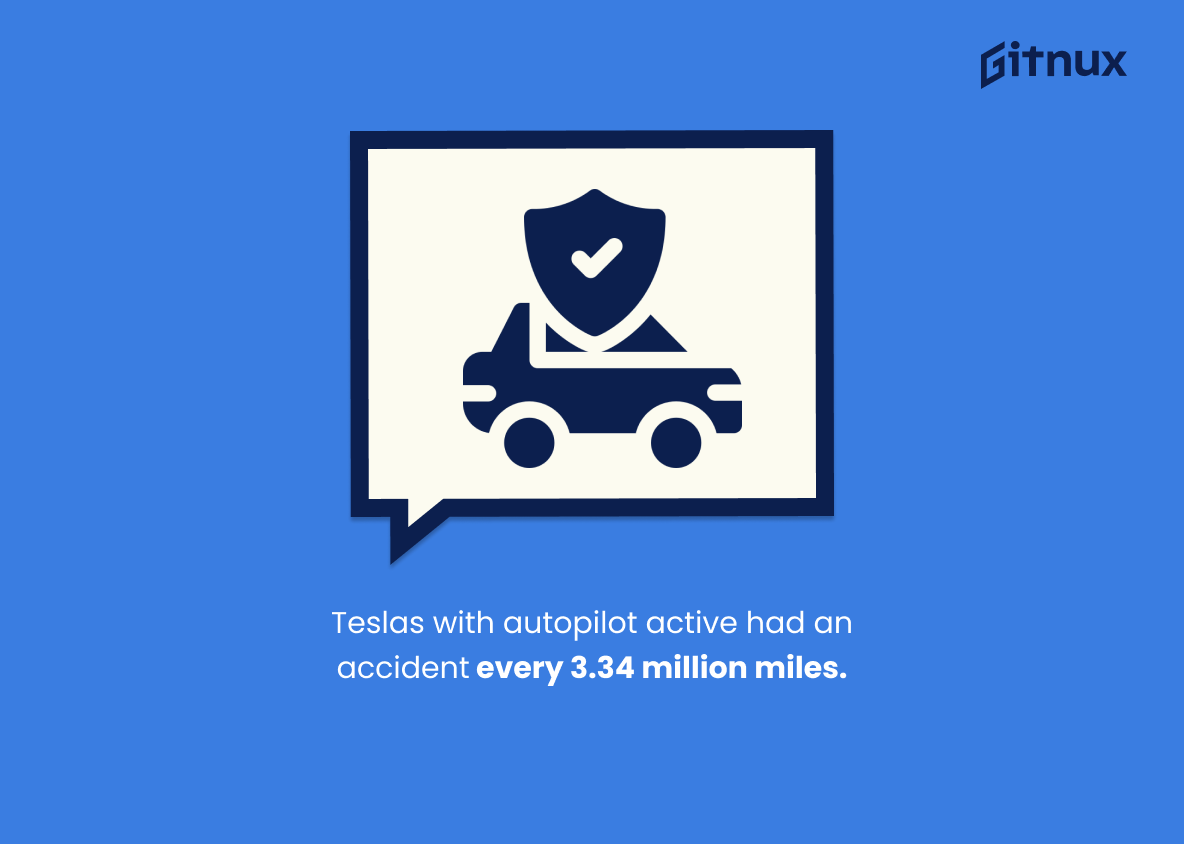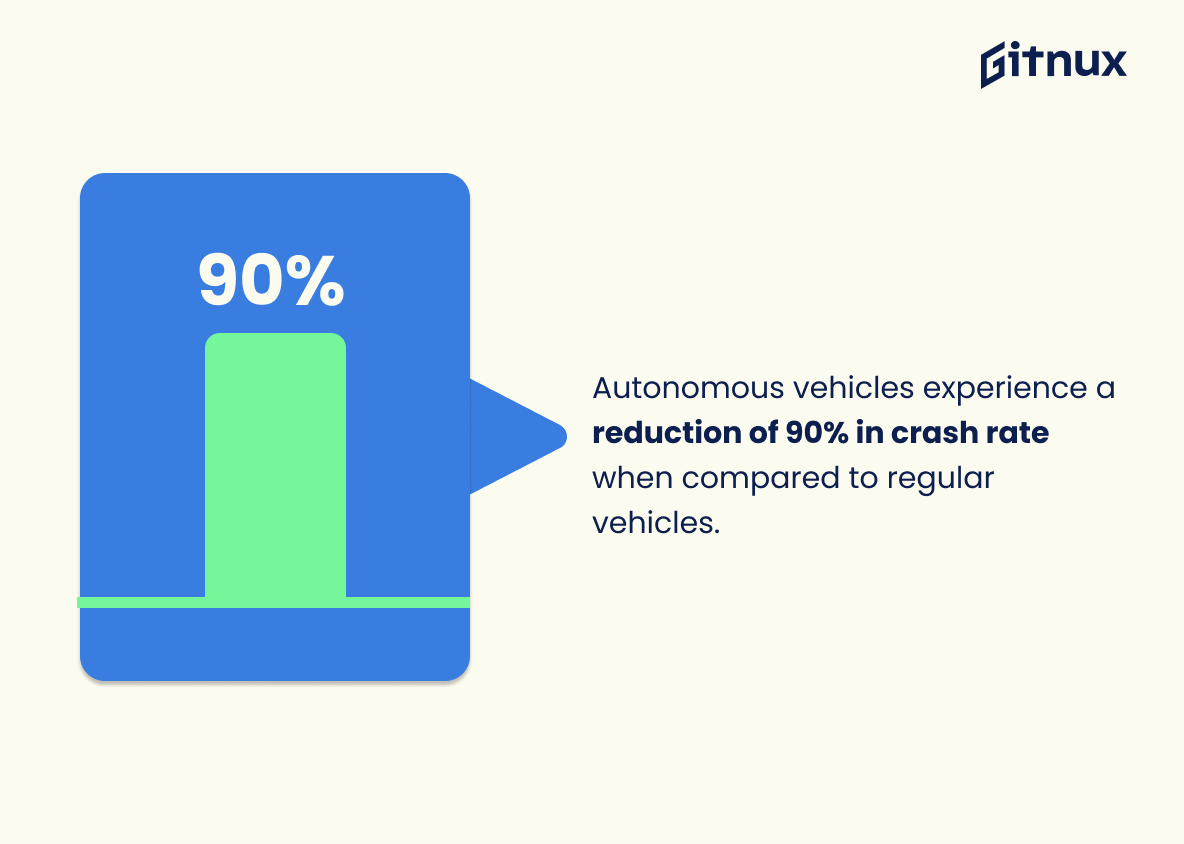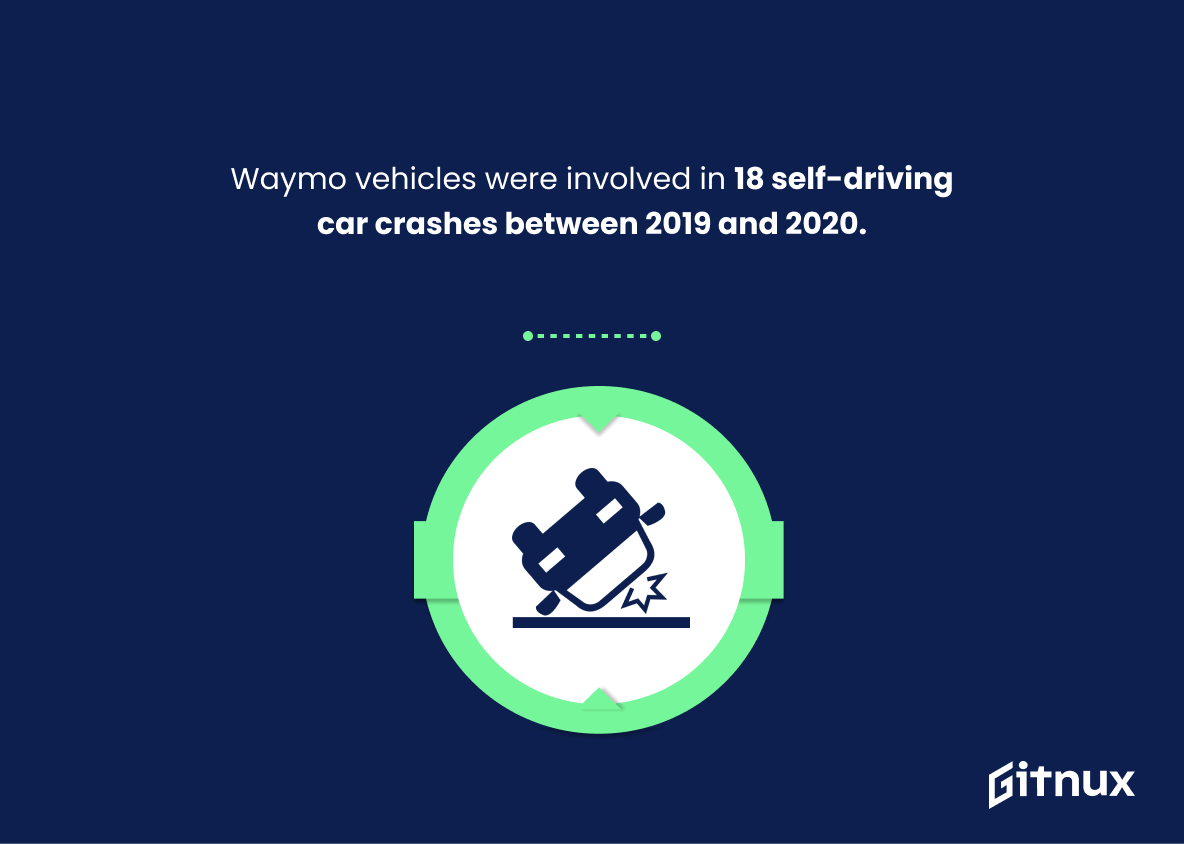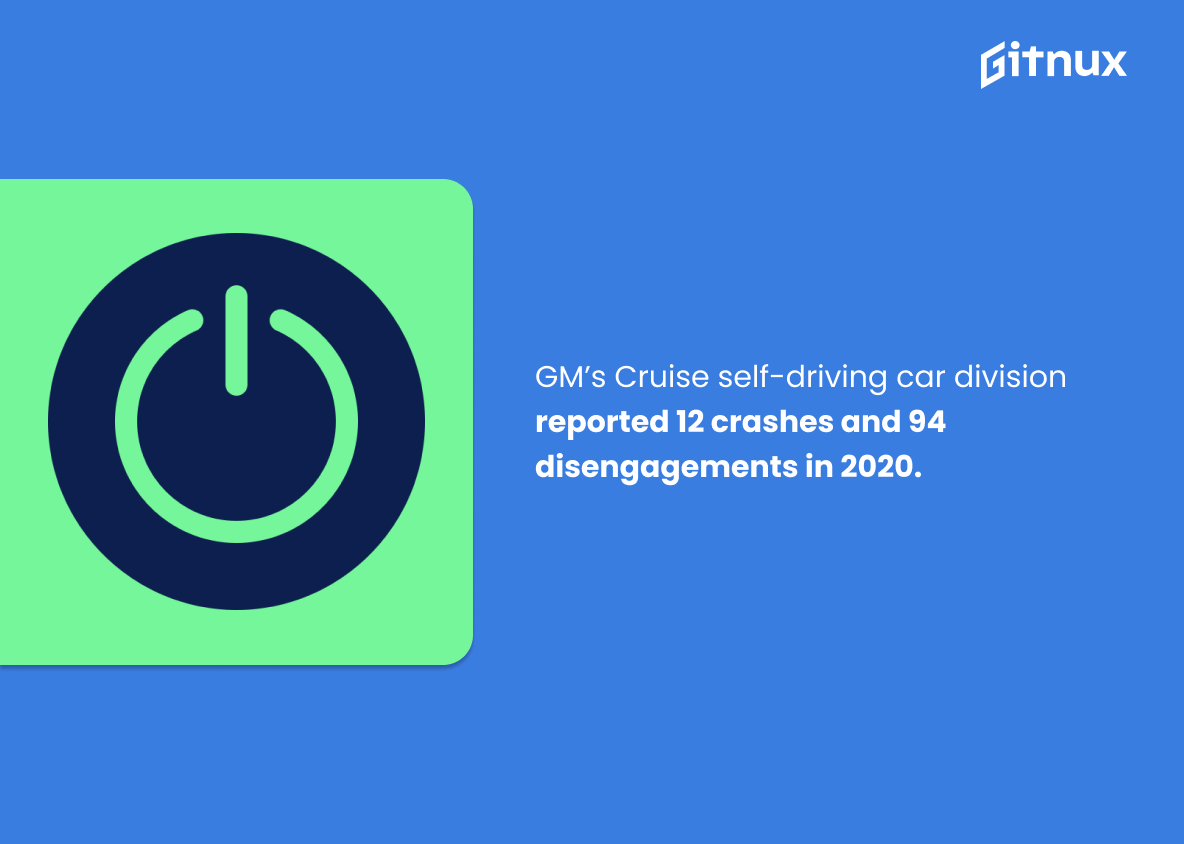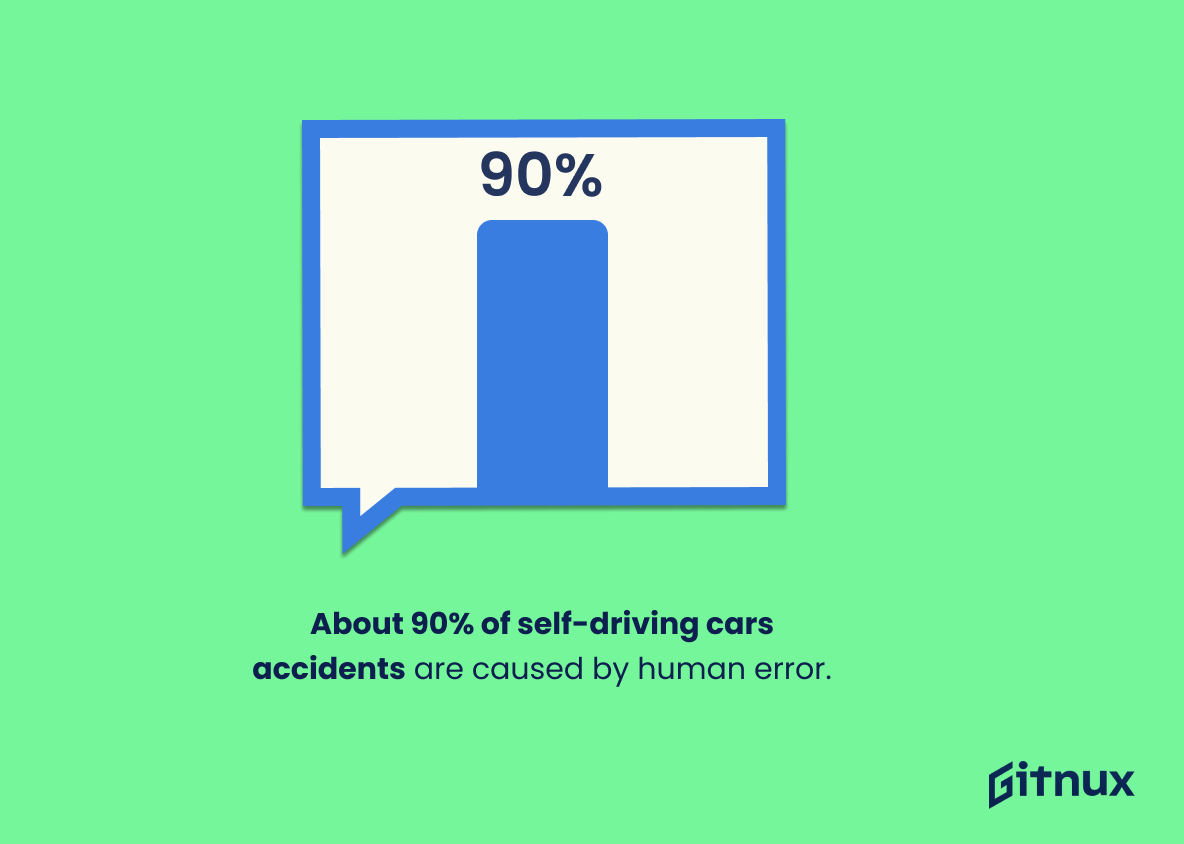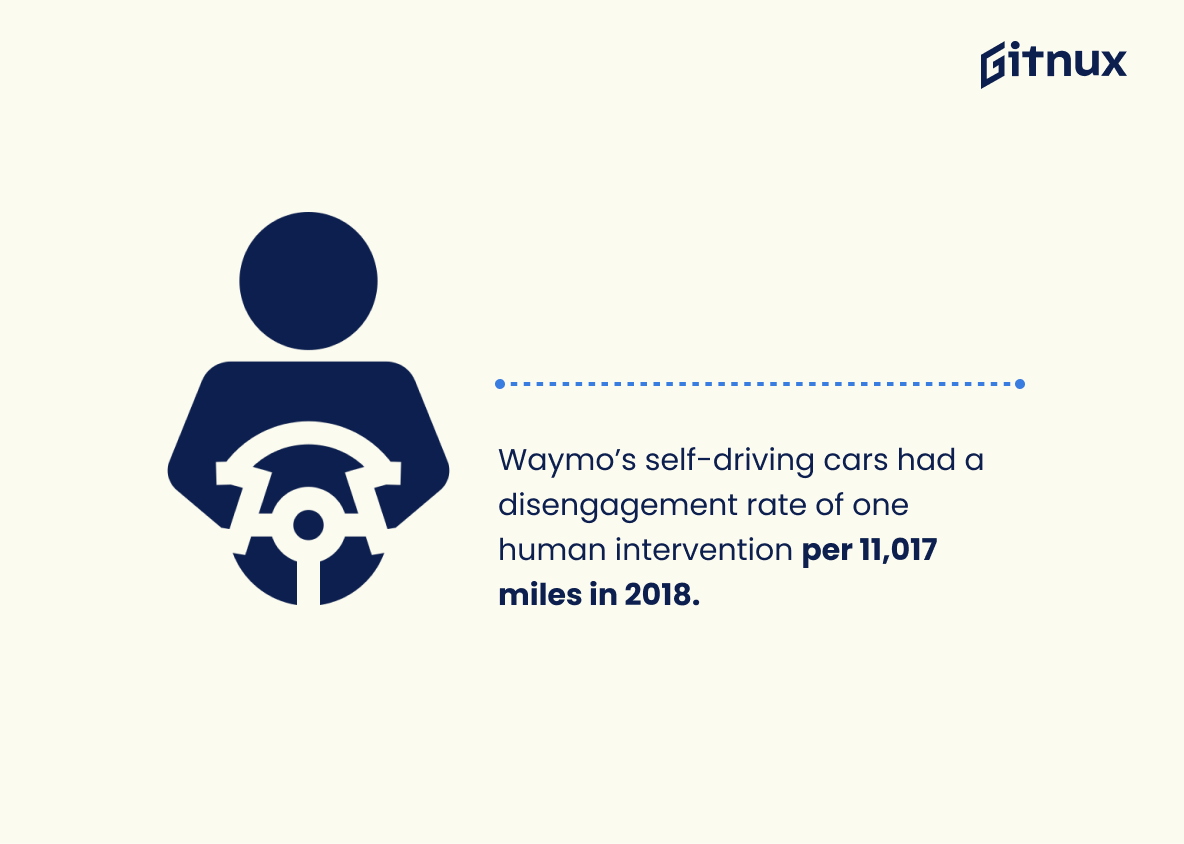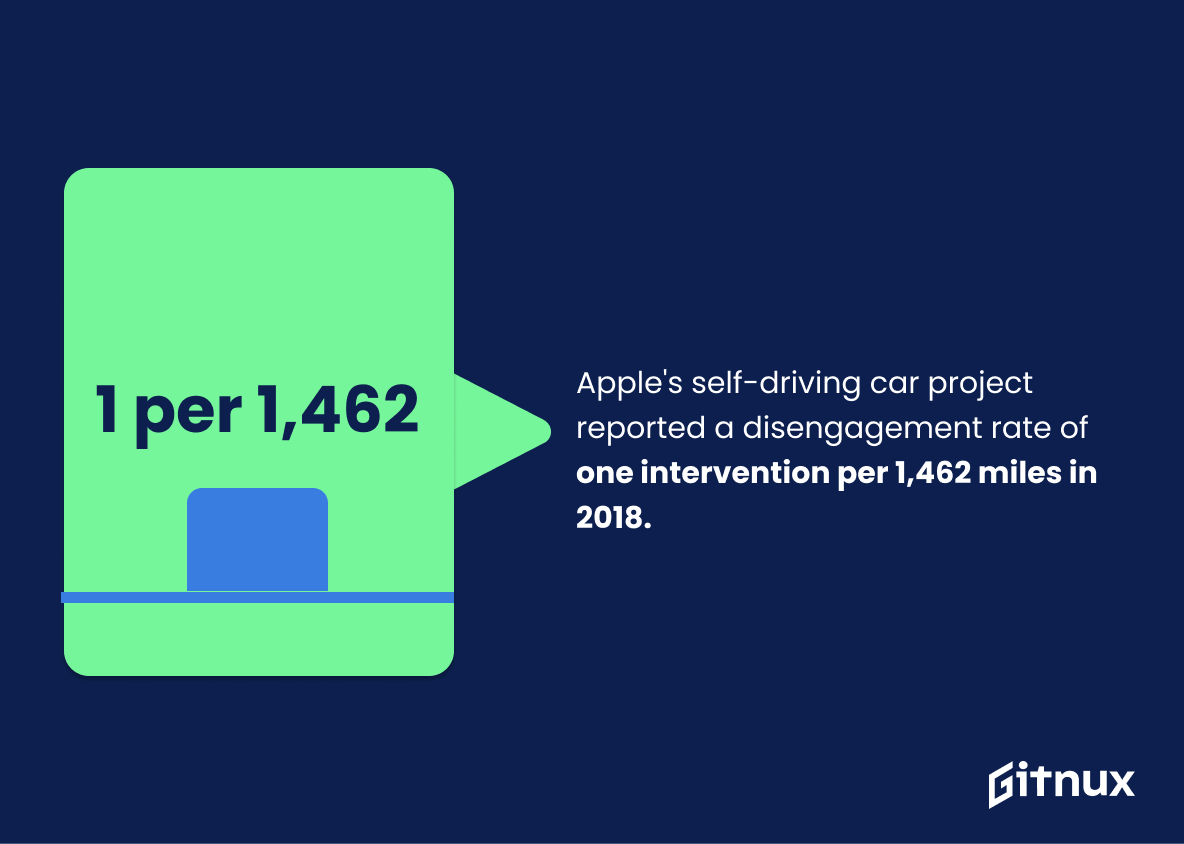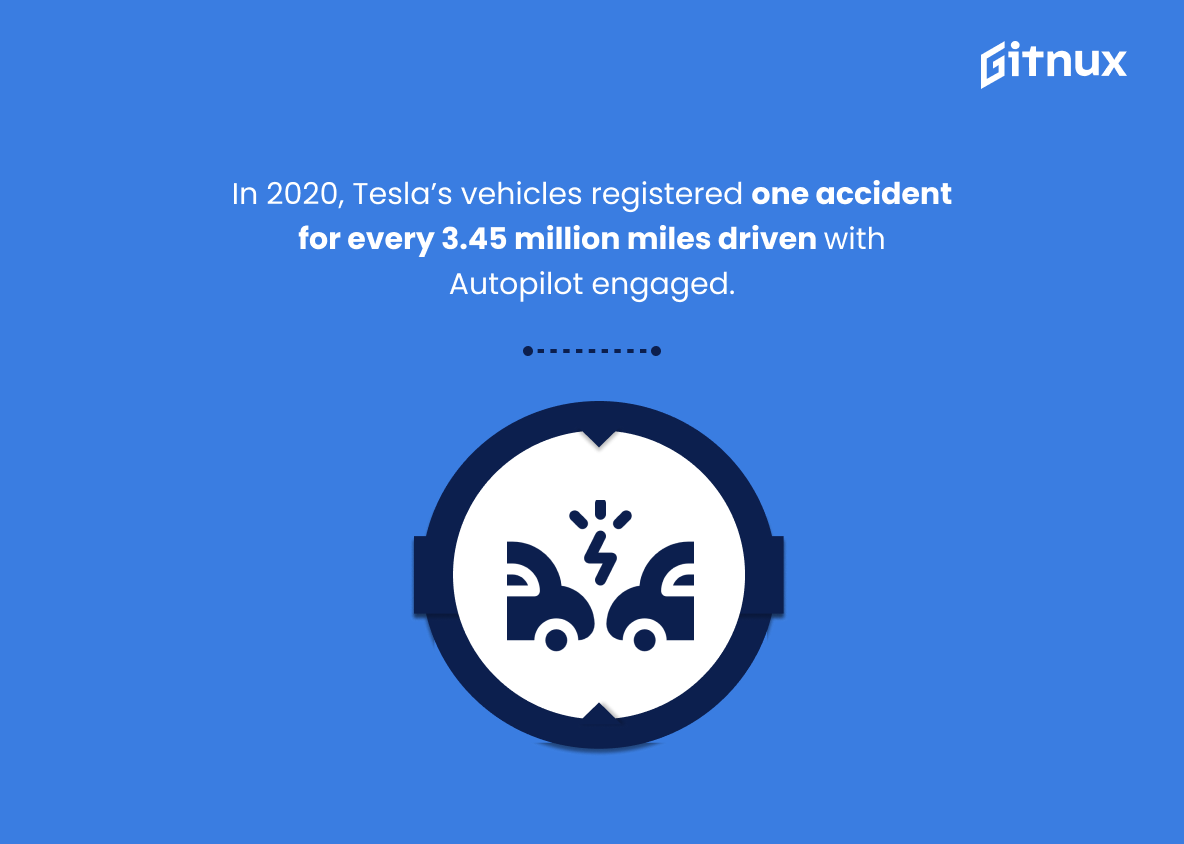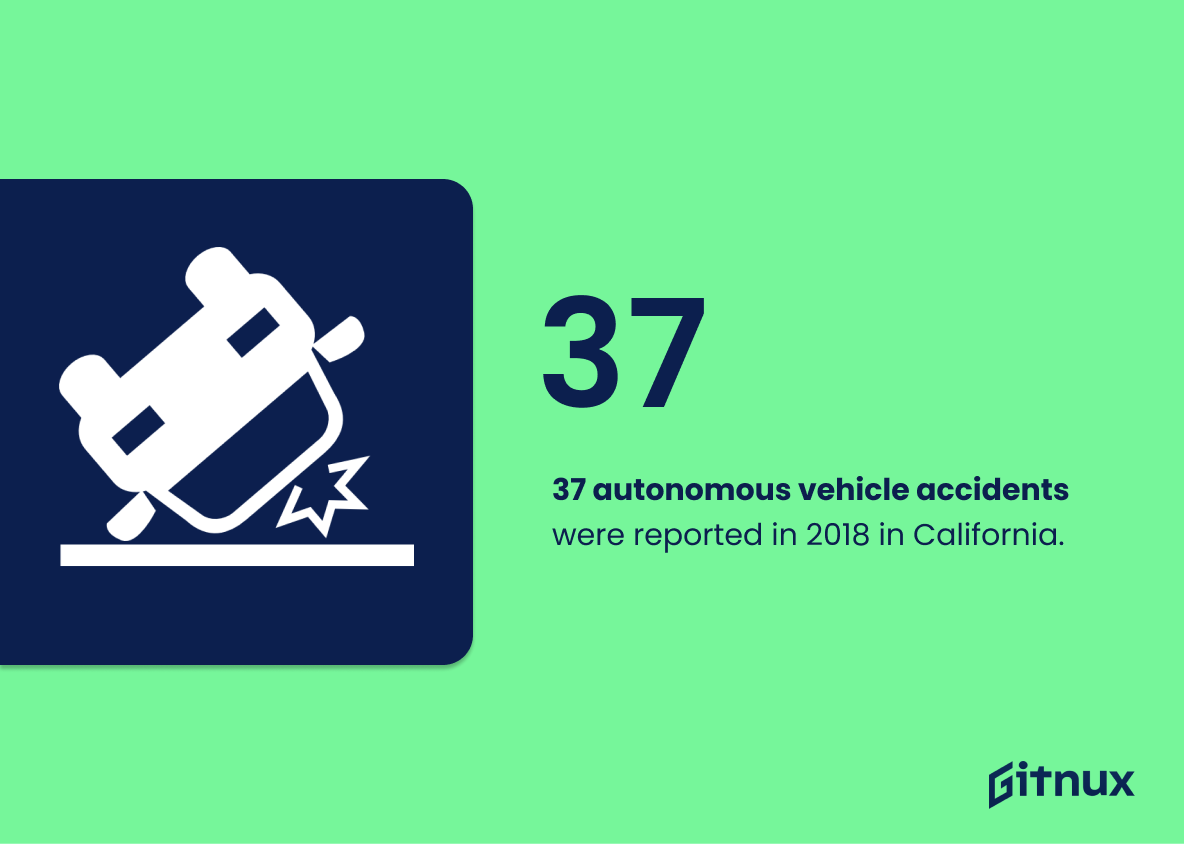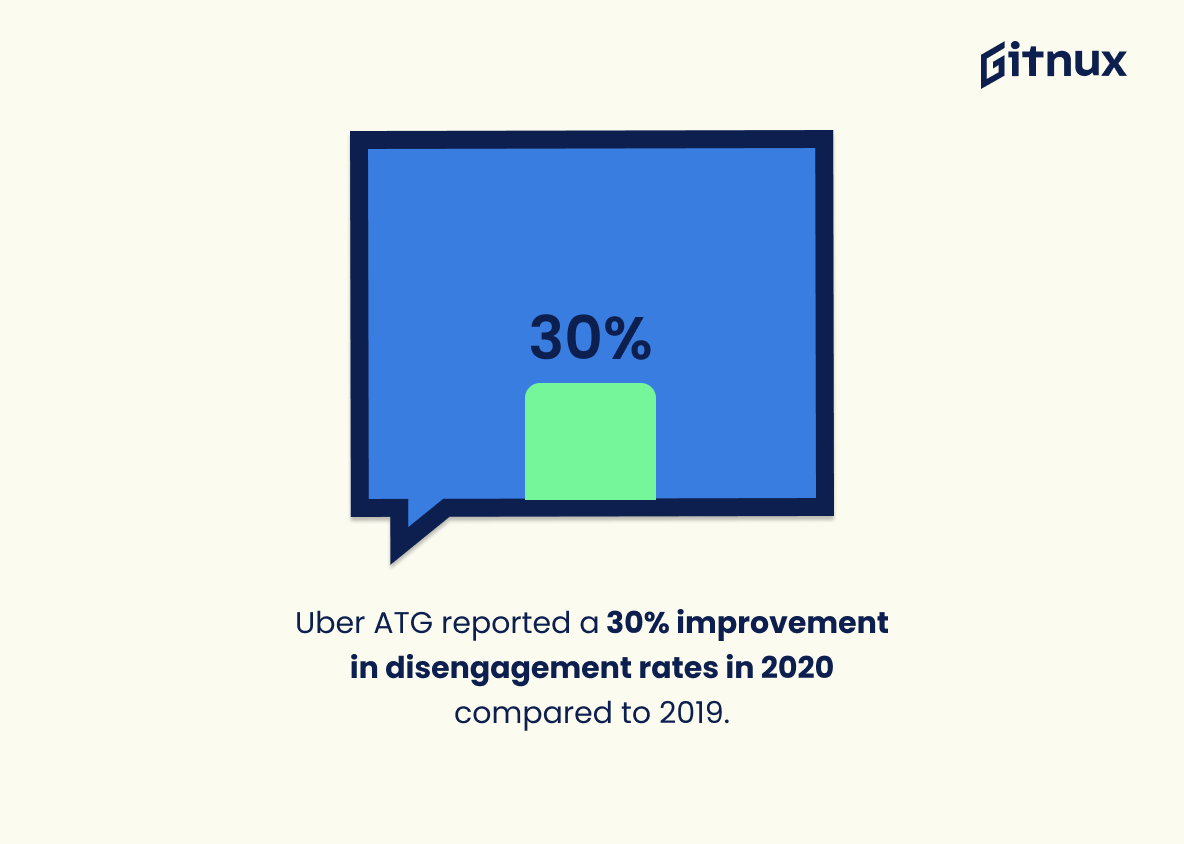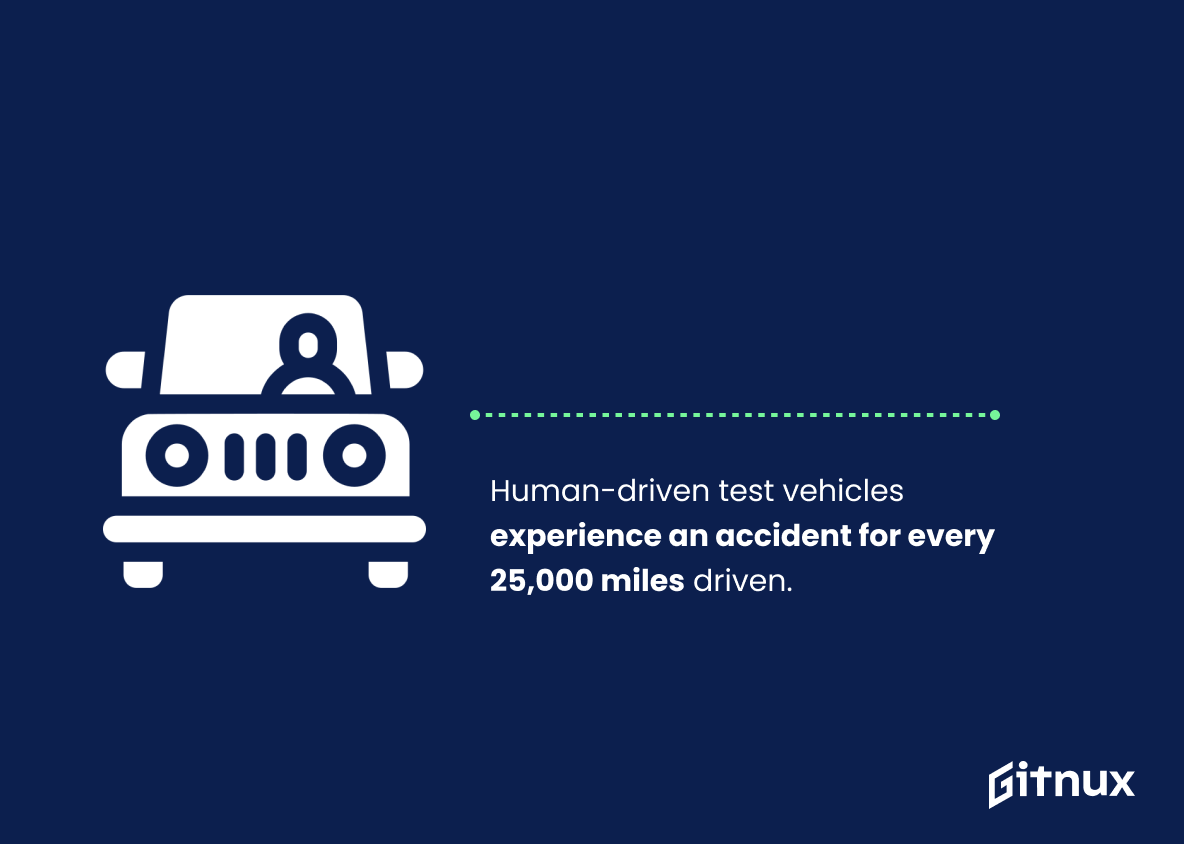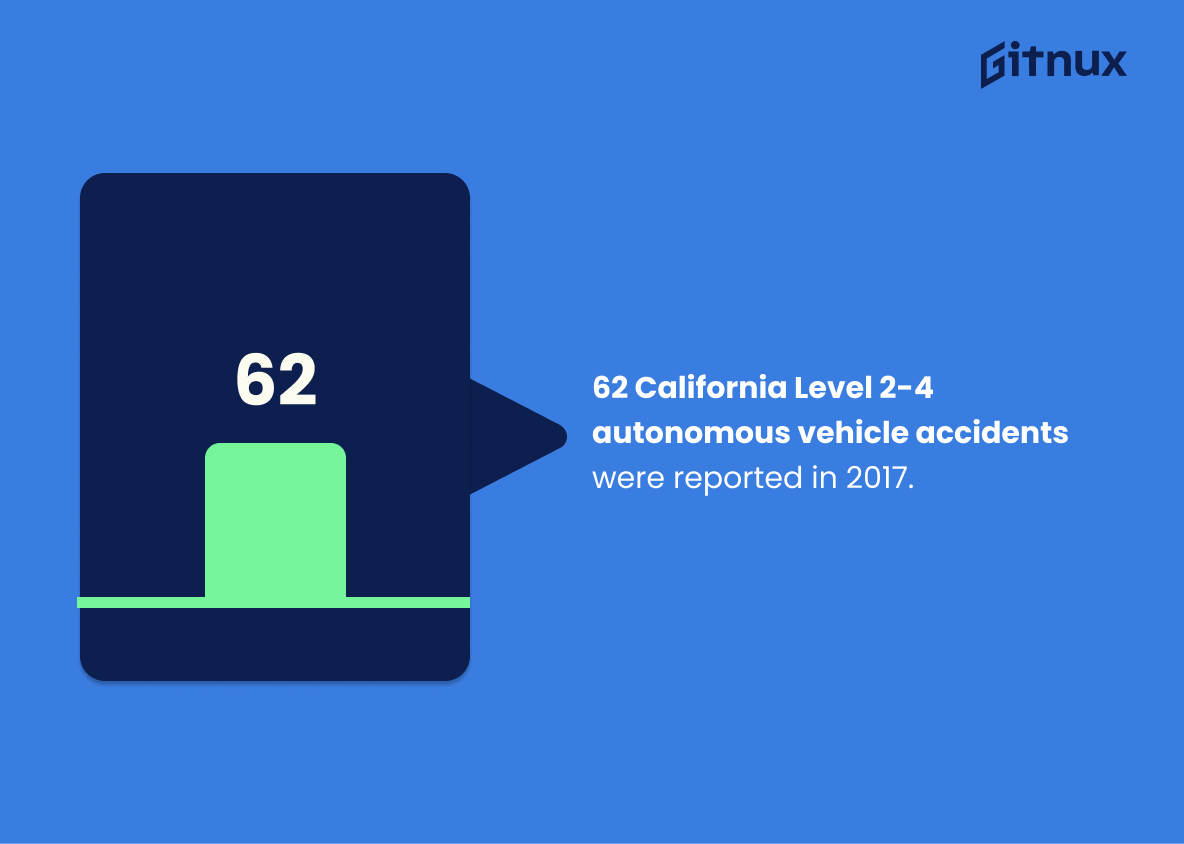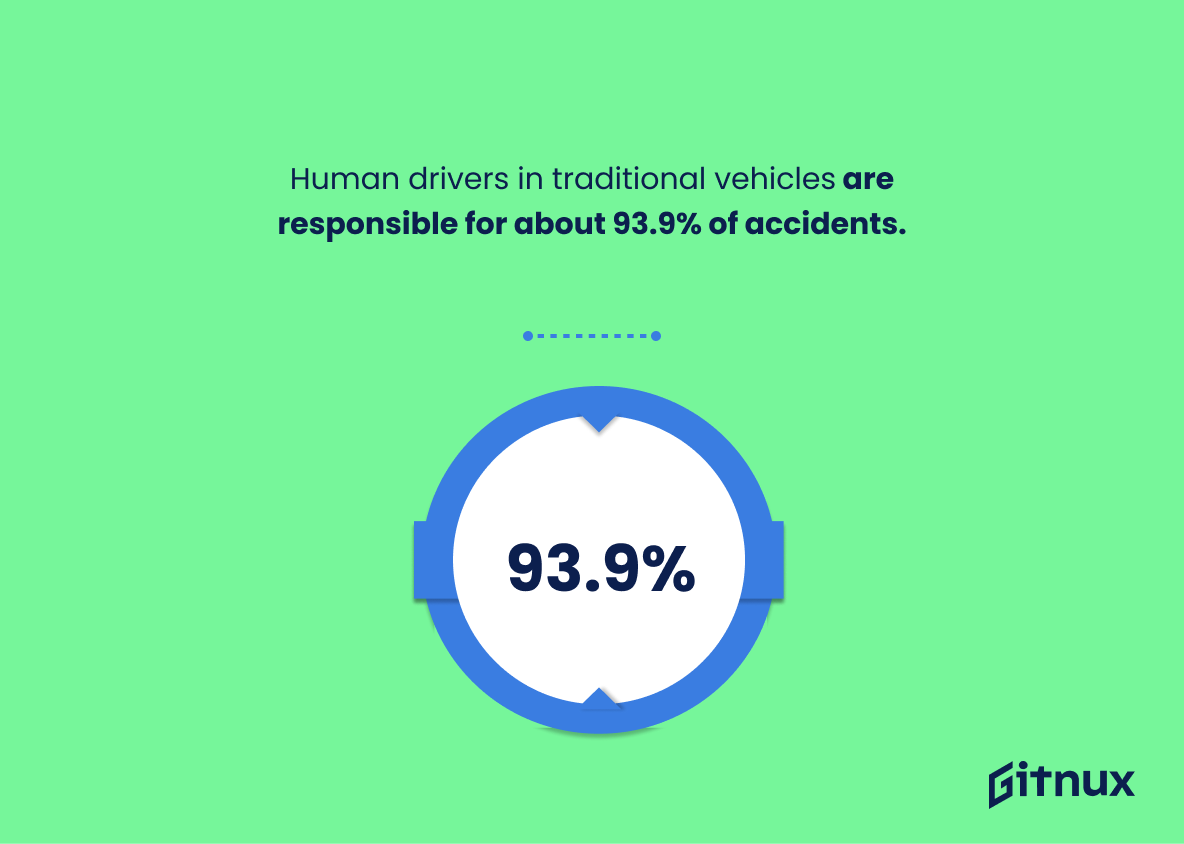Self-driving cars are becoming increasingly popular, and with that comes the need to understand their safety record. In this blog post, we will be looking at self driving car accident statistics from around the world. We’ll start by examining a statistic from RAND Corporation which states that self-driving cars are involved in 9.1 crashes per million miles driven. This is compared to an average non-self driving car crash rate of 4.1 million miles driven according to research published in ACM Digital Library’s Proceedings of the 2018 CHI Conference on Human Factors in Computing Systems (CHI ’18).
Self Driving Cars Accident Statistics Overview
In 2017, Waymo’s self-driving cars had a human intervention rate of 0.18 per thousand miles.
This statistic is a testament to the progress that has been made in the development of self-driving cars. It shows that the technology is becoming increasingly reliable, with a human intervention rate of only 0.18 per thousand miles. This is a significant improvement from previous years, and it indicates that self-driving cars are becoming safer and more reliable. This is an important statistic to consider when discussing self-driving car accident statistics, as it shows that the technology is improving and becoming more reliable.
Teslas with autopilot active had an accident every 3.34 million miles.
This statistic is a testament to the safety of Teslas with autopilot active, as it demonstrates that these cars have an accident only once every 3.34 million miles. This is an impressive figure, and it speaks to the reliability of the autopilot system in keeping drivers safe. It is a powerful reminder that self-driving cars are becoming increasingly safe and reliable, and that they can be trusted to get drivers to their destinations safely.
Human-driven vehicles are in a fatal accident one out of every 100 million miles driven.
This statistic is a testament to the safety of human-driven vehicles, and serves as a benchmark for the safety of self-driving cars. It highlights the fact that, even with the best technology, self-driving cars will need to be even safer than human-driven vehicles in order to be accepted by the public.
Autonomous vehicles experience a reduction of 90% in crash rate when compared to regular vehicles.
This statistic is a powerful testament to the safety of autonomous vehicles, demonstrating that they are far less likely to be involved in a crash than regular vehicles. This is an important point to consider when discussing self-driving car accident statistics, as it highlights the potential for these vehicles to reduce the number of accidents on the road.
Waymo vehicles were involved in 18 self-driving car crashes between 2019 and 2020.
This statistic is a stark reminder of the potential risks associated with self-driving cars. It highlights the fact that, despite the advances in technology, these vehicles are still prone to accidents and can cause serious harm to those involved. It is a reminder that, while self-driving cars may offer convenience and safety, they are not infallible and must be used with caution.
GM’s Cruise self-driving car division reported 12 crashes and 94 disengagements in 2020.
This statistic is a telling indication of the progress made in the development of self-driving cars. It shows that while there have been some crashes, the number of disengagements is much higher, indicating that the technology is still in its early stages and needs further refinement. This statistic is important to consider when discussing the safety of self-driving cars, as it provides a snapshot of the current state of the technology.
About 90% of self-driving cars accidents are caused by human error.
This statistic is a stark reminder that, despite the promise of self-driving cars, human error still plays a major role in the safety of these vehicles. It highlights the need for further research and development to ensure that self-driving cars are as safe as possible, and that the technology is able to account for the mistakes that humans make.
Waymo’s self-driving cars had a disengagement rate of one human intervention per 11,017 miles in 2018.
This statistic is a testament to the progress that has been made in the development of self-driving cars. It shows that the technology is becoming increasingly reliable, with only one human intervention required for every 11,017 miles driven. This is a significant improvement from previous years, and it indicates that self-driving cars are becoming safer and more reliable. This is an important factor to consider when discussing self-driving car accident statistics, as it shows that the technology is improving and becoming more reliable.
Apple’s self-driving car project reported a disengagement rate of one intervention per 1,462 miles in 2018.
This statistic is a crucial indicator of the progress of Apple’s self-driving car project, as it demonstrates the effectiveness of the technology in navigating roads without human intervention. By comparing the disengagement rate to the number of miles driven, it is possible to gauge the reliability of the self-driving car system and its ability to safely navigate roads. This information is essential in understanding the safety of self-driving cars, and is therefore a key factor in the discussion of self-driving car accident statistics.
In 2020, Tesla’s vehicles registered one accident for every 3.45 million miles driven with Autopilot engaged.
This statistic is a testament to the safety of Tesla’s Autopilot system, demonstrating that it is capable of navigating roads with a high degree of accuracy and reliability. It is a powerful indicator that self-driving cars are becoming increasingly safe and reliable, and that the technology is advancing at a rapid pace. This statistic is an important piece of evidence in the discussion of self-driving car accident statistics, as it shows that the technology is becoming more and more reliable.
37 autonomous vehicle accidents were reported in 2018 in California.
This statistic is a telling indication of the safety of autonomous vehicles in California in 2018. It provides a snapshot of the number of accidents that occurred in the state, and can be used to compare the safety of self-driving cars to other vehicles. It is an important piece of information for anyone interested in the safety of autonomous vehicles.
Uber ATG reported a 30% improvement in disengagement rates in 2020 compared to 2019.
The statistic that Uber ATG reported a 30% improvement in disengagement rates in 2020 compared to 2019 is a testament to the progress being made in the development of self-driving cars. This improvement indicates that the technology is becoming more reliable and safer, which is a crucial factor in reducing the number of accidents involving self-driving cars. Therefore, this statistic is an important piece of evidence in understanding the overall safety of self-driving cars and the progress being made in the industry.
Human-driven test vehicles experience an accident for every 25,000 miles driven.
This statistic is a stark reminder of the importance of self-driving cars in reducing the number of accidents on the road. By comparison, self-driving cars have the potential to reduce the number of accidents by a significant margin, making them a safer and more reliable option for drivers.
62 California Level 2-4 autonomous vehicle accidents were reported in 2017.
This statistic is a stark reminder of the potential risks associated with self-driving cars. It serves as a warning that, despite the promise of increased safety, autonomous vehicles are not immune to accidents. As such, it is essential that we continue to monitor and evaluate the safety of these vehicles as they become more prevalent on our roads.
Human drivers in traditional vehicles are responsible for about 93.9% of accidents.
This statistic is a stark reminder of the importance of self-driving cars in reducing the number of accidents on the roads. It highlights the need for autonomous vehicles to be developed and implemented in order to reduce the number of accidents caused by human error. It also serves as a reminder that, while self-driving cars may not be perfect, they can still be a major improvement over traditional vehicles when it comes to safety.
Conclusion
From the statistics presented, it is clear that self-driving cars have a much lower crash rate than traditional vehicles. Self-driving cars are involved in 9.1 crashes per million miles driven compared to 4.1 for non-self driving cars and 1 out of every 100 million miles driven for human drivers in traditional vehicles. Autonomous vehicle technology has also been shown to reduce accidents by up to 90%, with Waymo’s self-driving car division reporting 12 crashes and 94 disengagements in 2020 alone, while Tesla reported one accident every 3.34 million miles with autopilot engaged during the same period of time.
Additionally, Apple’s autonomous vehicle project had a disengagement rate of one intervention per 1,462 miles in 2018 and Uber ATG reported an improvement of 30% from 2019 to 2020 when comparing their respective disengagement rates over those two years as well. These figures demonstrate that autonomous vehicles can be safer on roads than regular ones if used correctly; however further research should be conducted into this area before any definitive conclusions can be drawn about its safety benefits or drawbacks relative to other forms of transportation such as public transport or cycling
References
0. – https://www.iihs.org
1. – https://www.iii.org
2. – https://www.reuters.com
3. – https://www.techcrunch.com
4. – https://www.venturebeat.com
5. – https://www.social.techcrunch.com
6. – https://www.caranddriver.com
7. – https://www.rand.org
8. – https://www.fortune.com
9. – https://www.nhtsa.gov
10. – https://www.doi.org
11. – https://www.electrek.co
12. – https://www.tmlewin.com
13. – https://www.qz.com
14. – https://www.tesla.com
ZipDo, cited June 2023: Self Driving Cars Accident Statistics

